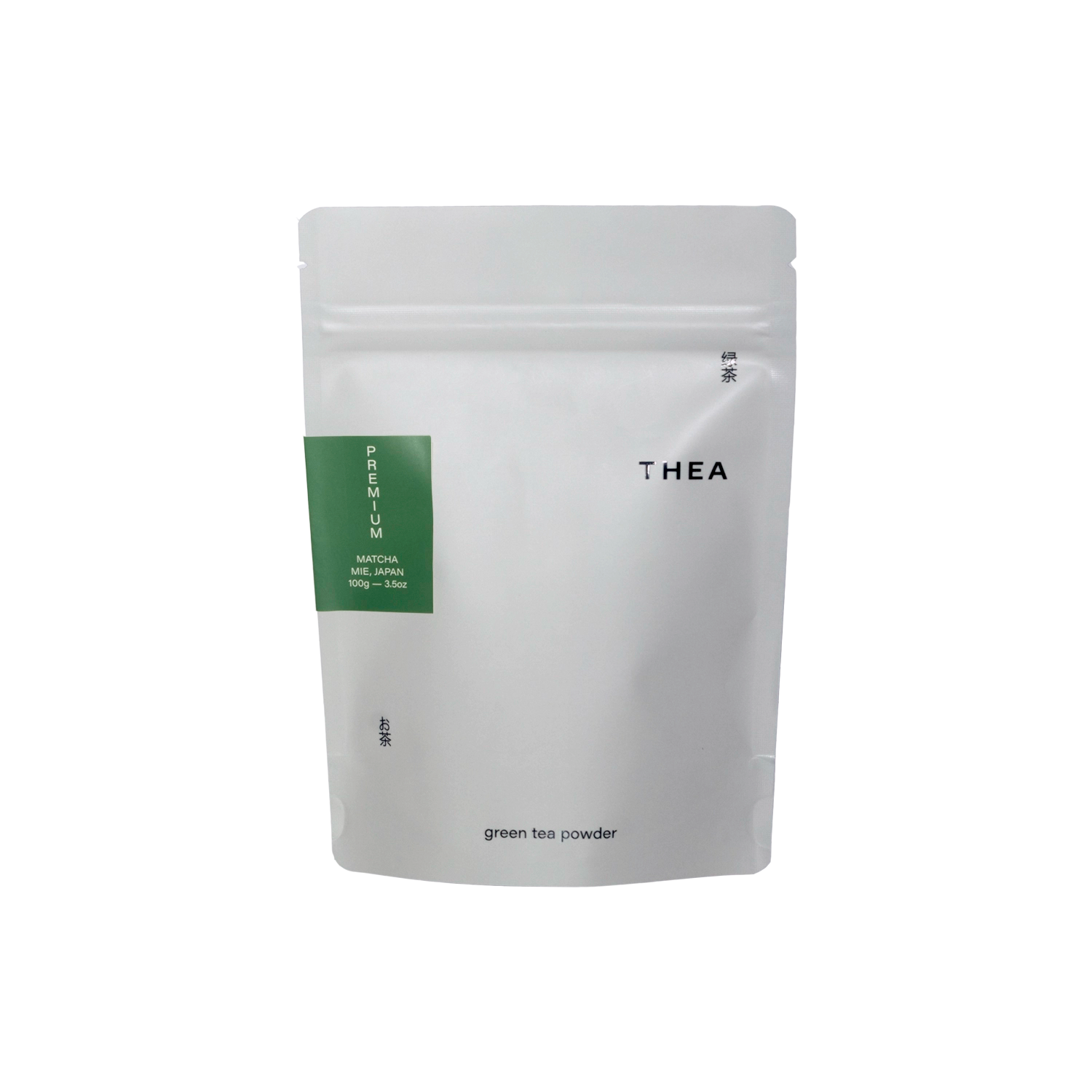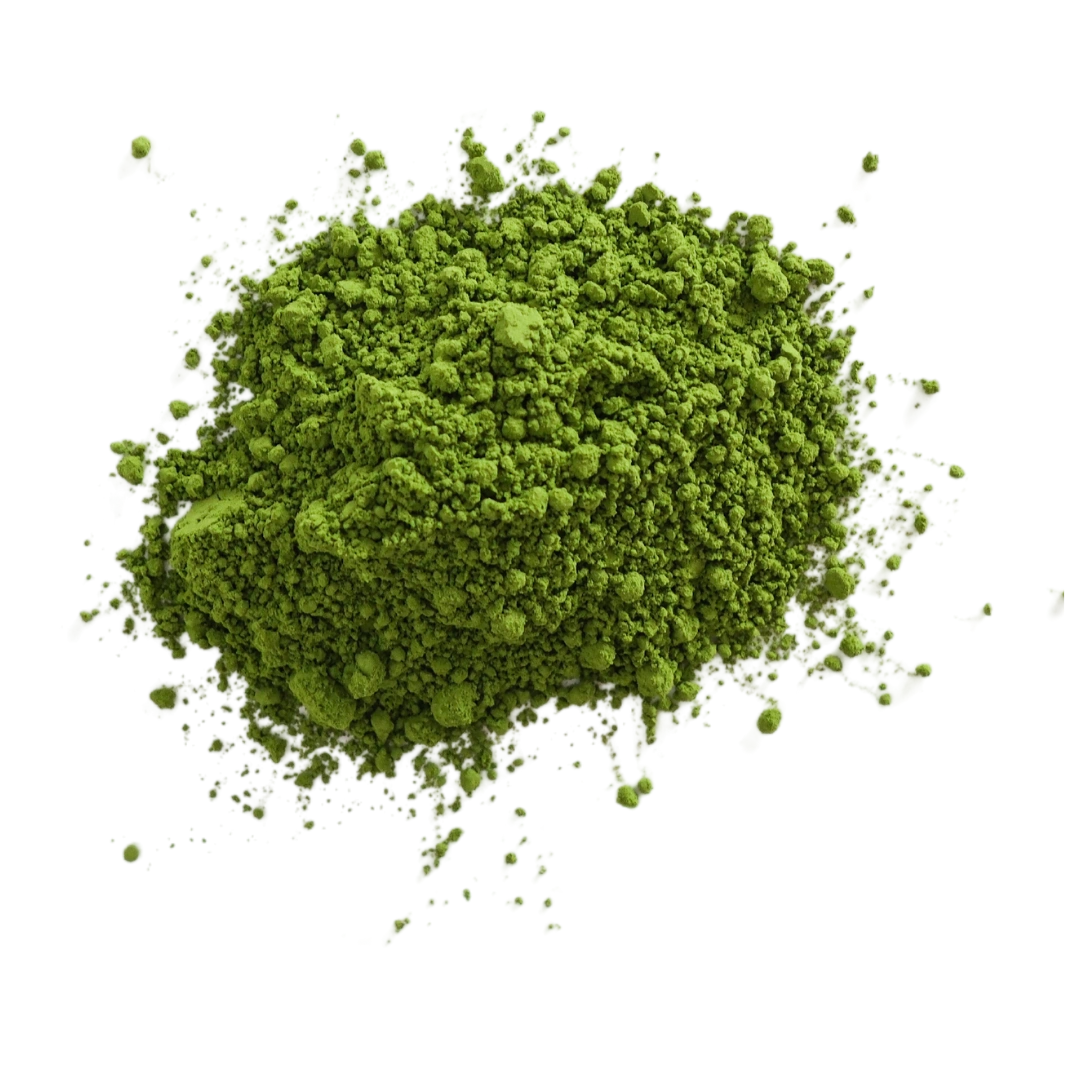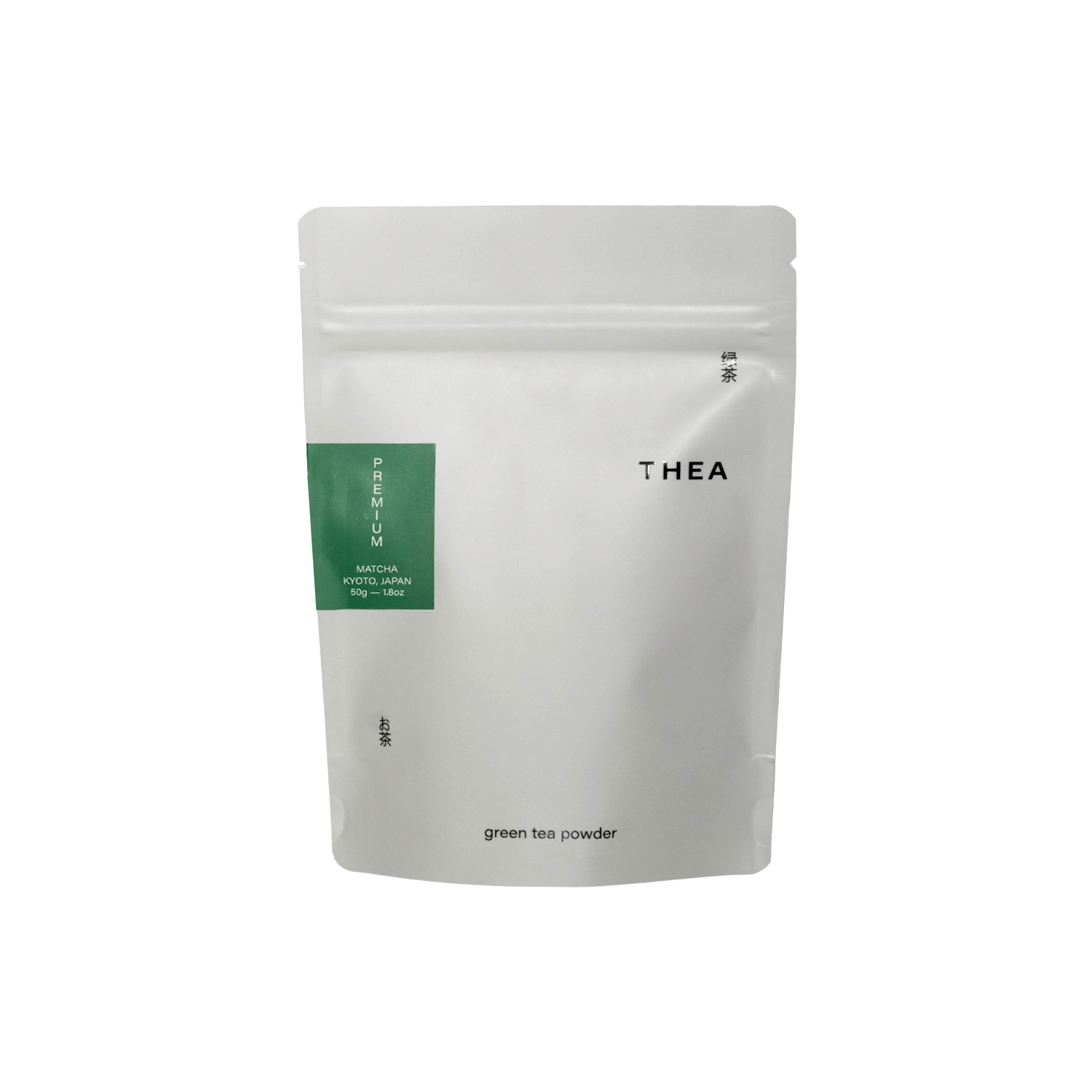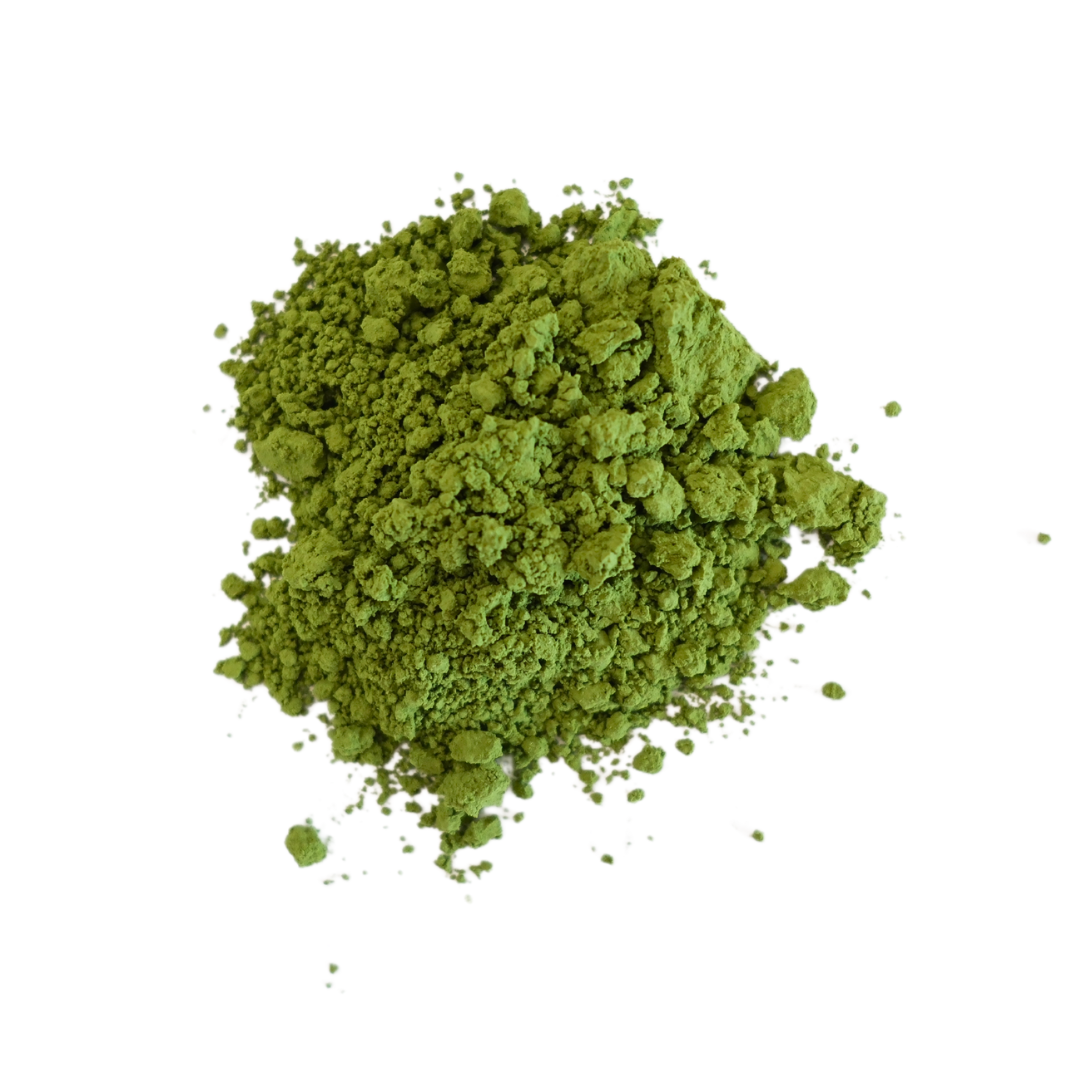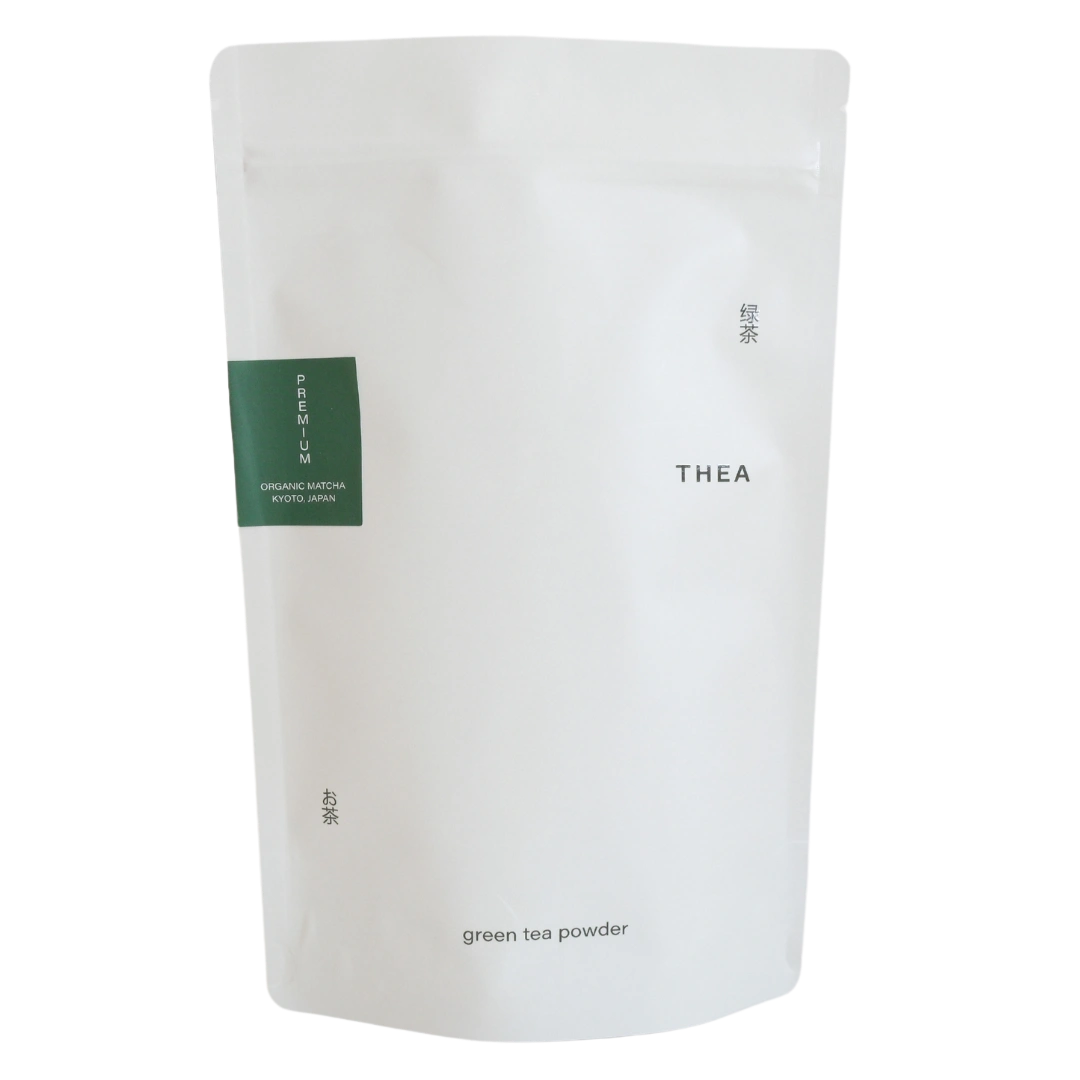What is Matcha Green Tea?
It's taking over your news feed, people are flaunting green drinks around town, and some even swear by its benefits—but what exactly is matcha green tea? Join us as we look into the origins and versatile uses of this vibrant green matcha powder.
So, what is it?
Matcha powder is a finely grounded powder made from green tea leaves that come from the camellia sinesis plant.
The Camellia sinensis plant, also simply known as the Green Tea plant, is thought to have first originated in China in the 8th Century. During this time, tea leaves were formed into bricks for easier transportation and the development of pulverising tea leaves into powder was created. Green Tea seeds were brought into Japan and cultivated Today, the majority of matcha is processed in Japan, however, the Uji region is particularly renowned for its matcha powder. Matcha from China and Vietnam is also growing. Let's say, matcha was born in China, but perfected in Japan.
People have described the taste of matcha powder to be earthy, savory, bitter, astringent and sweet, and this variation in flavor profile all comes down to how matcha powder is processed between the various regions.
How is matcha powder made?
We first wanted to address a common misconception: that matcha powder and green tea are the same thing. Despite originating from the same plant, these two products differ completely in how they are grown, shaded, harvested, and processed.
With green tea, the plant is not shaded before being harvested. After harvest, the tea leaves are dried to prevent fermentation. In Japan, the leaves are dried by steaming, while in China, they are pan-fried in a large wok. After drying, the leaves undergo a shaping process and are dried again. The final product is dry loose leaves, which can be enjoyed by steeping them in hot water. This process makes green tea similar to other traditional teas like black and oolong.
Now that we’ve got that out of the way, let’s chat about how matcha is made.
Matcha farms have a distinct and picturesque appearance. Unlike typical tea plantations, matcha powder farms are characterised by the shading structures that cover the tea plants. These structures can be traditional straw mats called "tana" or modern synthetic black netting. The rows of green tea bushes under these coverings create a distinctive landscape, with diffused sunlight casting a subtle light over the shaded leaves.
Shading Process
About 3-4 weeks before harvesting, the tea plants are shaded to reduce sunlight exposure. This process, known as "tare," involves:
- Traditional Shading: Using bamboo and straw mats, which allow a small amount of light to filter through, creating dappled shade.
- Modern Shading: Utilizing synthetic black nets that can be adjusted to control the amount of light precisely.
Shading is crucial as it slows down photosynthesis, leading to an increase in chlorophyll production. This results in the vibrant green color and higher levels of amino acids, especially l-theanine, which contribute to matcha’s unique umami flavour.
Soil Nutrients
The quality of matcha powder also heavily depends on the soil in which the tea plants are grown. Rich, fertile soil with good drainage is essential. Tea farmers often enrich the soil with organic matter and natural fertilisers to ensure the plants receive ample nutrients. This careful management of soil health supports the growth of tender, nutrient-rich leaves.
Different Harvests and Quality
- Ichibancha (First Harvest): The highest quality matcha powder comes from the first harvest in early spring. The leaves are young and tender, resulting in matcha powder that is smooth, sweet, and vibrant green.
- Nibancha (Second Harvest): Harvested in summer, these leaves are slightly more robust and have a stronger flavour.
- Sanbancha (Third Harvest): Late summer harvests produce matcha powder with a more pronounced bitterness.
You can also call harvests, flushes for example first flush. Our Superior Grade Matcha powder contains first harvest leaves, Our Kyoto Premium Grade Matcha Organic has mix of first and second. Typically confectionary grade matcha (also known as "culinary") normally contain a mix of third and second. This is the cheapest grade, and with a more pronounced profile it is best suited for confectionary.
Why do people like matcha powder?
Some people will say it tastes like dirt, others will say it’s their new favourite drink, but people enjoy matcha powder for various reasons.
- Unique flavour: Matcha has a distinct taste profile that combines a natural sweetness, a hint of bitterness, astringency and a rich umami flavour. Many people add a bit of sugar/sweetness to their matcha powder, whether this is honey, condensed milk, or plain sugar.
- Versatility: We’ve seen matcha ginger beer, strawberry matcha, matcha cakes, and even matcha soft serve ice cream! Matcha enthusiasts are loving playing around with different flavour combinations and it’s hitting the internet by storm.
- Caffeine alternative: Matcha powder provides a moderate caffeine boost without the jitters often associated with coffee. The presence of L-theanine in matcha powder helps to release caffeine more slowly, resulting in sustained energy and improved focus.
- Ritual: Many people enjoy the traditional ritual of preparing matcha powder using a bamboo whisk, or "chasen". This process involves carefully whisking the matcha powder with hot water in a bowl until it becomes frothy. The deliberate and mindful steps of measuring, sifting, whisking, and finally savouring the tea can be a calming and meditative experience. This ritual not only enhances the appreciation of matcha unique flavour but also provides a moment of tranquillity and mindfulness in a busy day.
Where can you buy matcha powder?
If you’re in New Zealand and want a matcha latte or iced matcha tea, we’ve got a whole list of reputable cafes that you can find here. Otherwise, if you’re wanting to get your hands on the best quality matcha powder in New Zealand, you can find that here at Thea Matcha.
Now you’re a matcha powder expert! Good luck out there on your calming, blissful journey.


